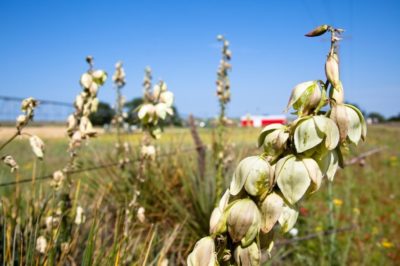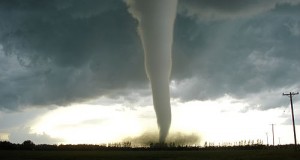 Sorry to be a buzz killer, but most roadsides are owned or controlled by someone else. Getting hands-on practice with wild botanicals is not legal, without permission or permit, on the majority of land in the United States. Furthermore, local governments regularly spray roadsides with insecticides, which typically render the plants and weeds unsafe for consumption for a period of time, dubbed the “harvest interval” by the chemical corporations.
Sorry to be a buzz killer, but most roadsides are owned or controlled by someone else. Getting hands-on practice with wild botanicals is not legal, without permission or permit, on the majority of land in the United States. Furthermore, local governments regularly spray roadsides with insecticides, which typically render the plants and weeds unsafe for consumption for a period of time, dubbed the “harvest interval” by the chemical corporations.
Even so, there is nothing illegal about walking roadsides to familiarize yourself with plants that are natural to your region – and to educate yourself on what you could use if you see it on your own land or elsewhere. I carry field guides, which include photographs and detailed descriptions of plants, when I explore. I also write down notes and dates in the margins, so I know when and where various species are present.
To get a jumpstart on botanical know-how, follow a few simple rules.
If It Smells and Tastes Like an Onion, It’s an Onion
At least 750 species of allium exist in the Northern Hemisphere, including onions, chives, leeks, shallots and garlic. A prolific species, it is also safe to gather and eat in the wild.
Only one poisonous species of allium can be found in North America (called “death camas”), but you’re extremely unlikely to die this way. Death camas usually does not bear the distinctive odor of its edible relatives, and does not taste good to humans. A fatal dose is two to six percent of your body weight. I would have to eat 2.9 to 8.7 pounds of death camas to suffer a lethal dose.
New “Survival Herb Bank” Gives You Access to God’s Amazing Medicine Chest
So, a rule of thumb is “if it smells and tastes like an onion, it’s an onion.” If you are not already an allium hunter, you may be surprised at how many can be found within a short time period. They are among the first plants to emerge in the spring, and the last to die down in the fall. Although they thrive in the cold, they do as well in the heat, even in open, scorching sun.
Flowers Make Easy Pickings
Flowering plants are often consumable, usually medicinal, and easy to identify. Consider the common dandelion. The entire plant can be eaten, although they become bitter with age. Dandelion heads are also used as natural dye, and it’s easy to make them into wine. Tincture of dandelion can be used to treat skin irritations and upset stomach.
Members of the sunflower family are also easy to spot. One of the most useful species is the Jerusalem’s artichoke. The leaves and stalks can be fed to livestock (including rabbits and goats), but save the hearty tubers for human consumption. Although a bit more flavorful, they can be prepared and eaten in the same ways potatoes are: raw, boiled, fried, mashed. Sunflower tubers will store three weeks to three months, depending on conditions.
Other useful species are Echinacea, which has tasty petals, yarrow, which contains a blood stauncher, and bouncing bet, which lathers in water, and can be used for laundry and bathing.
All Yuccas Are Not Created Equal
The first truth about yuccas is that many varieties can be useful as a source of food, fiber, medicine, and (sometimes) soap. The second truth is they’re not all they’re cracked up to be for survival situations.
Story continues below video
Not all species are edible, and among those that are, many have a bad flavor or cause a bellyache. A novice, and most intermediate survivalists, should not attempt to use yucca for medicinal purposes, because the properties of each species, not to mention different parts of a plant in the same species, react differently within the body. Finally, even though yuccas contain saponins, which are a natural source of soap, only a few species yield enough to make it a worthwhile alternative. Even then, many people are allergic to yucca soap, and who wants to suffer a rash in a survival situation?
All that said, wild yucca is a great source of natural fiber. I prefer to leave the main plant intact by harvesting dead leaves that hang beneath new growth. These can be torn length-wise into yarn-like strips, or used whole as a textile for weaving. Leaves that have been dead for a long time may have deteriorated too much, but you can still keep the plant intact by harvesting the good dead leaves and a few green leaves.
Yuccas and cacti are often companions, and cacti make a much better food source. Prickly pear is common, and the red or purple fruits taste good if boiled, and are a delicacy if sliced and fried. Of course, preparing a cactus is tricky, because you not only need a good blade to remove the thorns, but the bases of the thorns should be removed, too, because they are hard to chew or digest.
Don’t Let the Grass Bugs Bite
Grasses are the most abundant natural textile. In cold weather, you can stuff it in between layers of clothing to help keep you warm, or in bags to create bedding. It can also be twined to make rope and baskets, or used as kindling when dry.
Beware of the creepy-crawlers that make grass their habitat. Ticks hang out on grasses, and can transfer debilitating viruses to humans. Spiders that make their webs in grass are most likely not harmful, but getting several spider bites by putting them into your clothes or bedding is a distraction, and will likely be painful.
Sections of shorter grass are easy to till up as sod strips, which can be folded into bricks or turned into human-size Lincoln logs.
Sign up for Off The Grid News’ weekly email and stay informed about the issues important to you
 Off The Grid News Better Ideas For Off The Grid Living
Off The Grid News Better Ideas For Off The Grid Living




